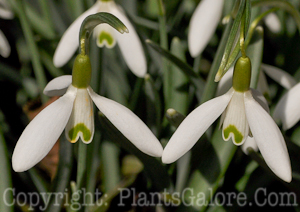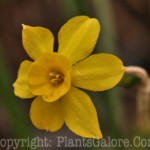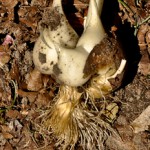Now is the time to create those beautiful displays of tulips, hyacinths, daffodils, crocus and other flowering bulbs for next spring. Bulbs planted in the fall must have time to establish roots yet this fall in order to get off to a good start next spring. Many types of bulbs must also be exposed to the chilling temperatures in order to form stems and flower buds.
When selecting bulbs, always avoid those which show any signs of disease, rot or are shriveled and dry. Buy the largest bulbs you can find for best results. Smaller bulbs are often cheaper in price but may not produce good flowers the first year.
For the best display, large groupings of individual species of bulbs should be used. A dozen or more large flowering tulips or two dozen small bulbs such as snowdrops or crocus planted in an area will give an excellent show. It is better to group the bulbs to form a “flow” of color than to scatter individual plants around a large area. Be sure to plant varieties of differing heights such that the taller ones are to the back of the bed and the shorter stemmed plants are in front.
In mixed perennial beds, plant daffodils and other perennial bulbs toward the middle of the bed or the back of the border. They are the only plants in bloom at that time of the spring so, even though they may be relatively short, you do not have to plant them in the front row. Remember that the foliage of these bulbs must be left to grow until it turns brown and dies which can take until the middle of the summer. By planting the bulbs back into the bed further, other plants can emerge later in the spring and camouflage the browning foliage.
Planting depths vary depending on the size of the bulb. Generally, the bottom of the hole should be about two and one‑half times the diameter of the bulb. A one inch crocus corm should be placed in a 2 ½ inch hole while a 3 inch tulip bulb needs a hole about 6 to 7 inches deep. In heavy clay soils, the bulbs should be planted a bit more shallow while in sandy soils they can be a little deeper. Bulbs planted too shallow may not survive the winter while those set too deep will be short stemmed and weak growing.
For large plantings, dig the area down to the proper depth and work some bone meal into the bottom of the excavation. For a more informal look, spread the bulbs randomly around the planting area and then adjust for proper spacing between plants. If you prefer straight rows, align the bulbs with proper spacing so that the plants can expand properly and yet fill the area with color.
On most bulbs, the roots come from a flat “basal plate” at the bottom of the bulb. When you place the bulbs, this plate should be gently pushed into the soil to assure good contact. Avoid using too much pressure or you may damage the bulb and prevent root growth.
Cover the bulbs with the soil that came from the hole and replace any mulch which was in the bed. For bulbs which are hardy for our area, you do not need to add any extra mulch.
Occasionally, squirrels will dig up bulbs or dogs will scratch away the soil in search of the bone meal. One method for preventing this is to place a layer of chicken wire a few inches above the bulbs and below the surface of the soil. This will allow the stems to emerge but will discourage the animals from digging down to the bulbs.
Those are a few basic tips for success with bulbs. As always, if you have landscape gardening questions or have a topic you would like to see covered, please let me know. Also, I have recently published a couple of eBooks that you might want to check out. The titles are, “A Rookie’s Guide to Designing Beds and Borders” and “A Rookie’s Guide to Implementing Beds and Borders“.
I am currently working on the next eBook, “A Rookie’s Guide to Hostas, Hostas, Hostas” which should be ready by the end of November, 2012. Also, “A Rookie’s Guide to Maintaining Beds and Borders” is in the works for February of 2013.




I like what you guys are up too. Such smart work and reporting! Carry on the excellent works guys Ive incorporated you guys to my blogroll. I think it’ll improve the value of my website aegegckebdfd